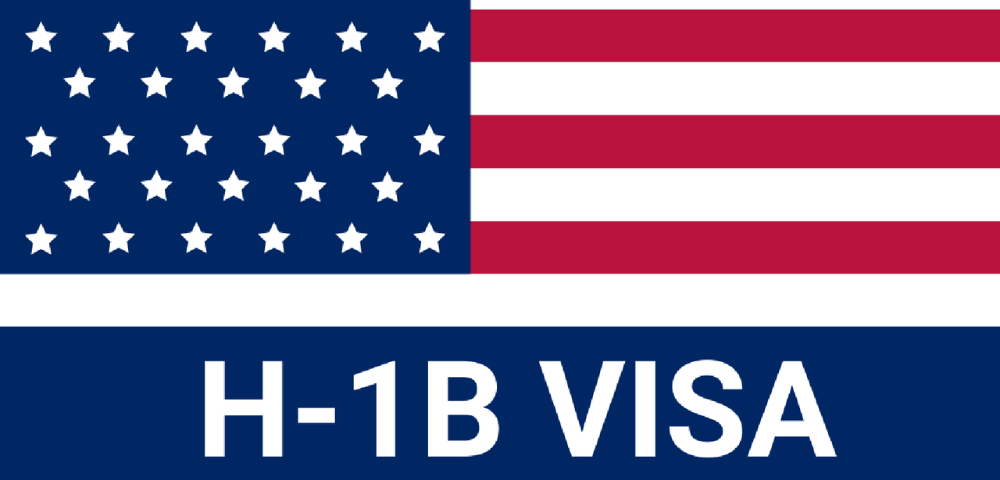
The H1B visa is a significant aspect of U.S. immigration, particularly for skilled workers around the globe. This visa category allows U.S. employers to temporarily employ foreign professionals in specialty occupations. This visa category, integral to the U.S. labor market, opens doors for foreign professionals in specialty occupations. This guide aims to demystify the H1B visa process, focusing on eligibility criteria and the application process. It's designed to provide skilled workers with a comprehensive understanding and a step-by-step approach to successfully apply for the H1B visa, ensuring they are well-equipped to embark on this pivotal journey towards working in the United States.
If you are a skilled worker aiming to navigate the H1B visa application process and understand the eligibility criteria, this guide is tailored for you.
The H1B visa, a cornerstone of U.S. immigration policy is designed to bring skilled workers to the U.S. to fill jobs that require specialized expertise. It is commonly sought by IT professionals, engineers, medical professionals, and others. The visa allows you to work in the U.S. for three years, extendable to six years.
Key aspects of the H1B visa include stringent eligibility criteria, such as requiring a bachelor’s degree or equivalent, and the job being in a specialty occupation. The application process involves finding a U.S. sponsor and navigating through legal requirements, including Labor Condition Applications (LCA) and USCIS approvals.
Securing a work visa USA can be a complex process, requiring careful documentation and adherence to immigration regulations. Awareness of these steps is crucial for skilled workers aiming to leverage this opportunity. While the H1B visa presents a valuable chance for skilled workers to advance their careers in the U.S., it’s essential to understand and meticulously follow the U.S. immigration protocols to ensure a successful application process.
Understanding the eligibility criteria for an H1B visa is crucial for skilled workers seeking employment in the U.S. under its immigration laws. Primarily, the H1B visa caters to positions requiring specialized knowledge, typically in fields like IT, engineering, or medicine. The key eligibility criteria include:
The job must qualify as a specialty occupation, requiring distinctive skills or knowledge pertinent to the role.
Skilled workers must hold at least a bachelor’s degree or its equivalent, relevant to the job.
A crucial aspect of the H1B visa application process is obtaining sponsorship from a U.S. employer who will file the necessary petitions on your behalf.
Employers must get an approved LCA, affirming that hiring a foreign worker will not adversely affect U.S. workers.
These criteria form the foundation of the H1B visa application process and must be meticulously met by skilled workers aiming to navigate U.S. immigration.
The Application Process for the H1B Visa, integral to U.S. immigration, is a streamlined yet detailed procedure tailored for skilled workers seeking employment in specialized fields.
Your first step in the H1B visa application process is finding a U.S. employer willing to sponsor your visa. Initially, a U.S. employer, recognizing the unique capabilities of a skilled worker, initiates the process by sponsoring the H1B visa application. This crucial first step underscores the demand for specialized talent in the U.S. workforce.
Subsequently, the employer files a Labor Condition Application (LCA) with the Department of Labor, ensuring compliance with U.S. labor standards, affirming that hiring you will not adversely affect U.S. workers.
Upon approval, the next pivotal phase is the submission of Form I-129 to the U.S. Citizenship and Immigration Services (USCIS). This form, central to the application process, requires meticulous documentation, including proof of the applicant's qualifications and the job's eligibility criteria.
Finally, upon USCIS approval, you can apply for the H1B visa at a U.S. Embassy or Consulate in your home country, culminating in the rigorous application process that intertwines the aspirations of skilled workers with the needs of the U.S. economy
The H1B visa has an annual cap of 65,000 visas, with an additional 20,000 for those who have earned a master’s degree or higher from a U.S. institution. The application process typically begins on April 1st for the fiscal year starting October 1st. Early preparation is crucial due to the cap.
Required documents include:
Fees for the H1B visa include filing fees for the LCA and Form I-129, and a visa issuance fee.
Securing an H1B visa, a crucial pathway for skilled workers in U.S. immigration, involves navigating several challenges and considerations.
These factors underscore the importance of thorough preparation and awareness of the nuances in U.S. immigration law for skilled workers aspiring to work in the U.S. under the H1B visa program.
While on an H1B visa, maintaining legal status is crucial. This includes:
When changing employers on an H1B visa, skilled workers must navigate U.S. immigration procedures. The new employer initiates the application process, ensuring compliance with eligibility criteria. This transition is a critical aspect of maintaining legal H1B visa status for skilled workers in the U.S.
Navigating the H1B visa application process as a skilled worker is complex but manageable with the right information and preparation. Understanding the eligibility criteria, application process, and maintaining legal status are key to successfully obtaining and keeping an H1B visa. As U.S. immigration policies continue to evolve, staying informed and compliant is crucial for skilled workers seeking opportunities in the U.S. Simplify your visa journey with IVC Services - your trusted partner for expert guidance in securing your Student Visa USA. We're here to support you every step of the way